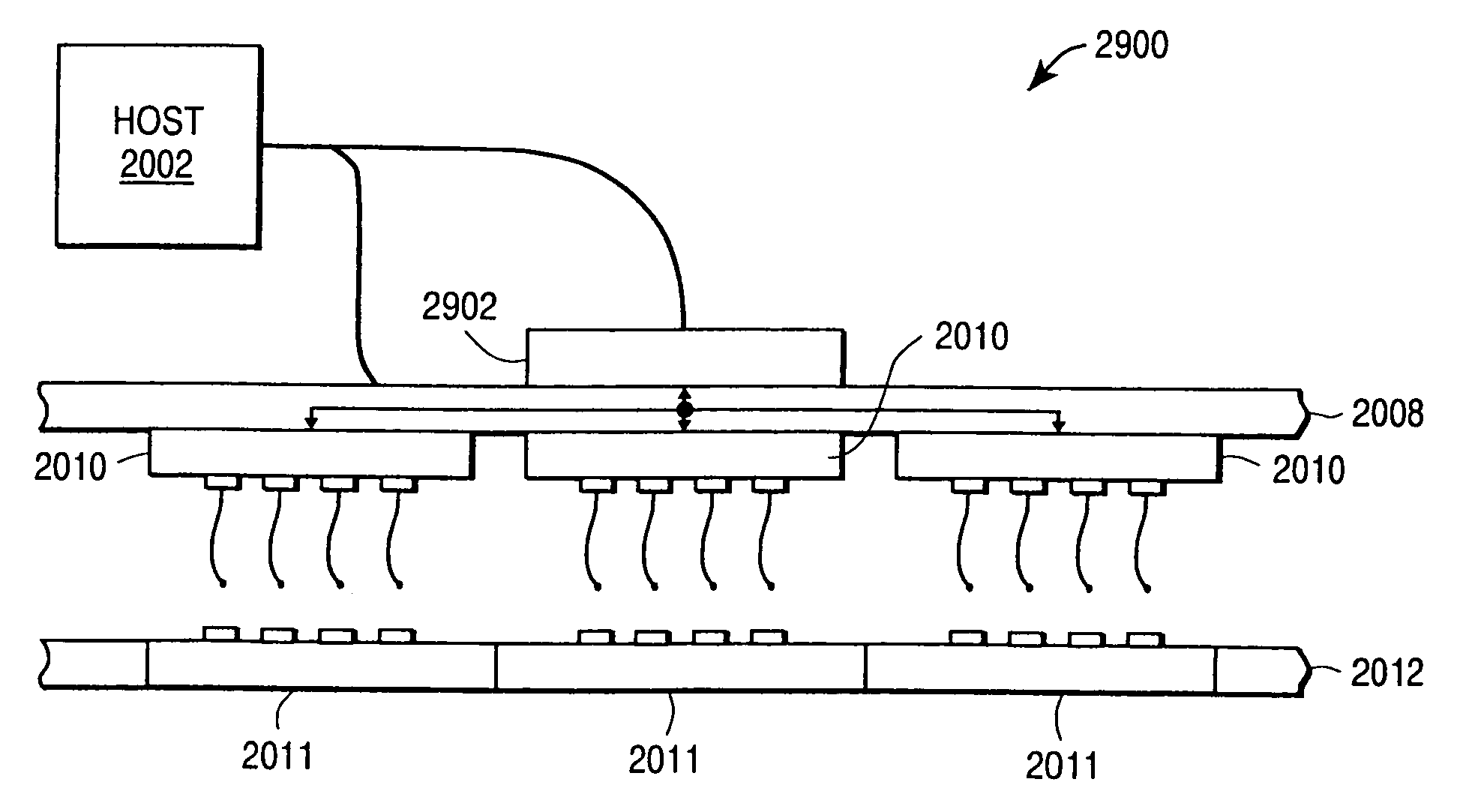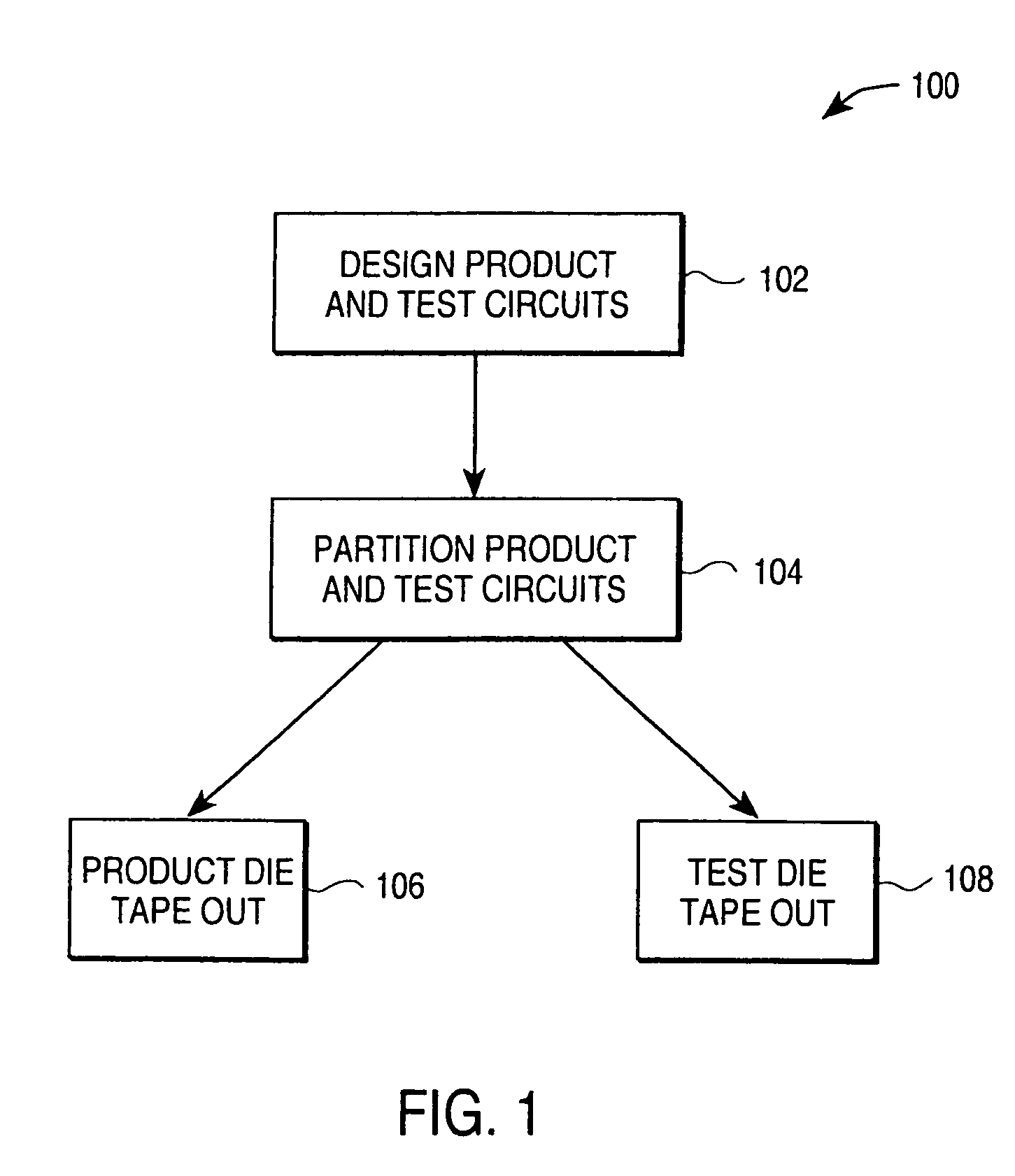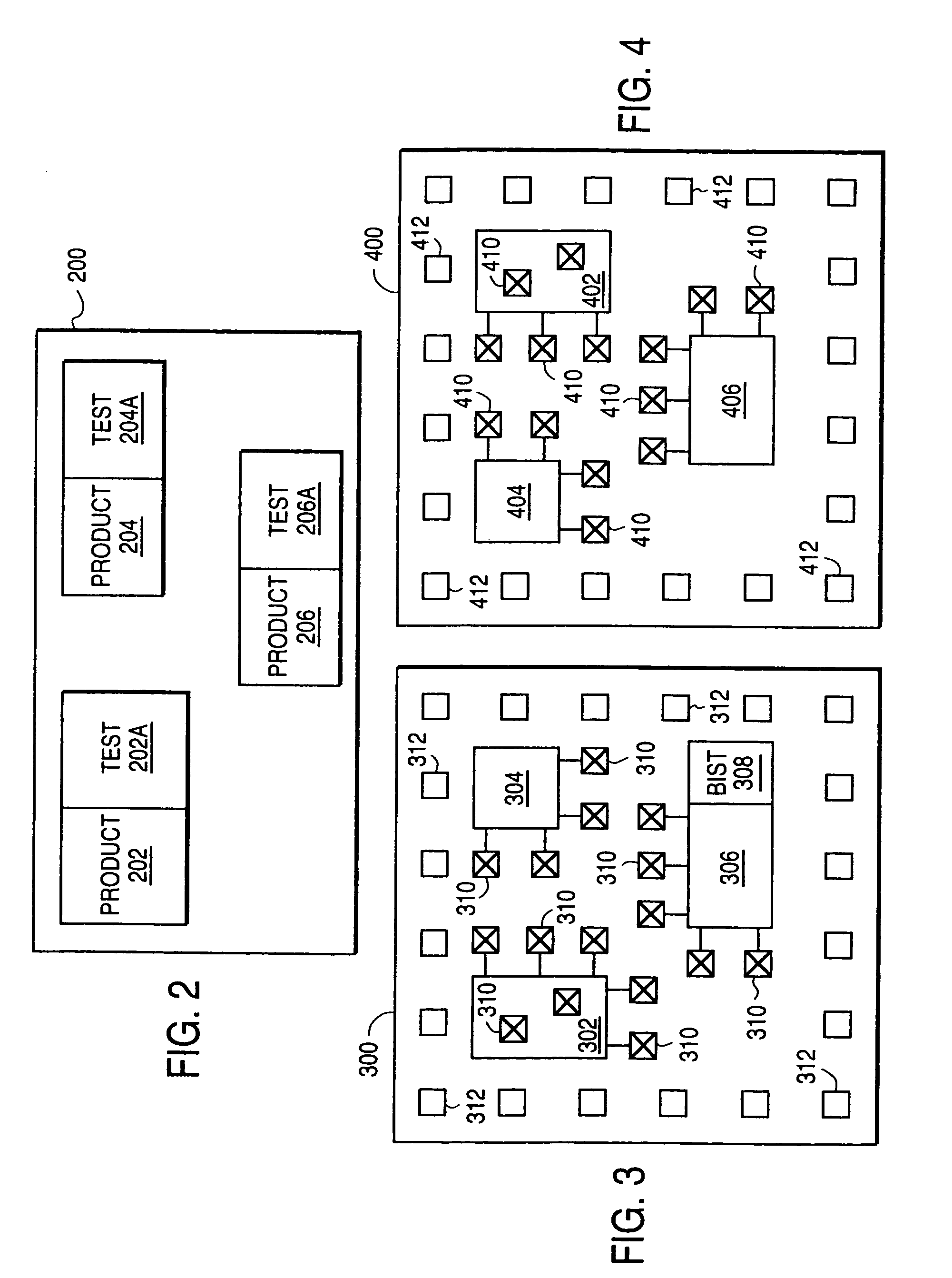Test assembly including a test die for testing a semiconductor product die
a technology for testing assembly and product die, which is applied in the direction of semiconductor/solid-state device testing/measurement, semiconductor/solid-state device details, instruments, etc., can solve the problems of increasing and increasing the complexity and density of the integrated circuit design, so as to reduce the effect of reducing the size of the product die and high degree of fault coverag
- Summary
- Abstract
- Description
- Claims
- Application Information
AI Technical Summary
Benefits of technology
Problems solved by technology
Method used
Image
Examples
Embodiment Construction
[0065]In the following detailed description of the present invention numerous specific details are set forth in order to provide a thorough understanding of the present invention. However, one skilled in the art may practice the invention without these specific details. In some instances, well known methods, procedures, and components have not been described to avoid obscuring the present invention.
[0066]FIG. 1 shows one embodiment of a design methodology 100 for designing a product die and a corresponding test die that includes test circuitry for providing test signals to, or monitoring signals from, one or more circuits on the product die. FIGS. 2-4 illustrate product die and test die generated by design methodology 100.
[0067]Throughout this application the terms “product die” and “product device” refer to a single instance of an integrated circuit that is formed on a semiconductor wafer or on an insulating or other appropriate substrate. These terms may also refer to a device und...
PUM
 Login to View More
Login to View More Abstract
Description
Claims
Application Information
 Login to View More
Login to View More - R&D
- Intellectual Property
- Life Sciences
- Materials
- Tech Scout
- Unparalleled Data Quality
- Higher Quality Content
- 60% Fewer Hallucinations
Browse by: Latest US Patents, China's latest patents, Technical Efficacy Thesaurus, Application Domain, Technology Topic, Popular Technical Reports.
© 2025 PatSnap. All rights reserved.Legal|Privacy policy|Modern Slavery Act Transparency Statement|Sitemap|About US| Contact US: help@patsnap.com



